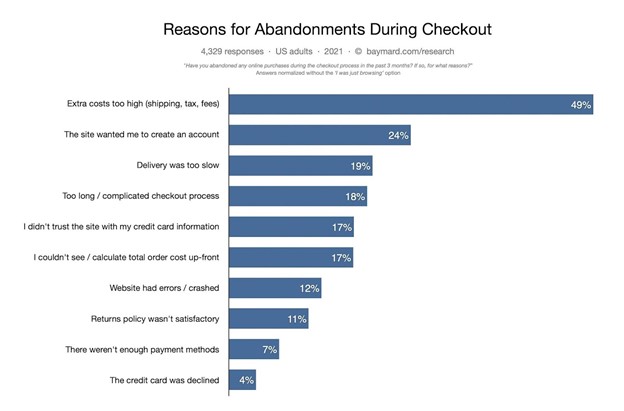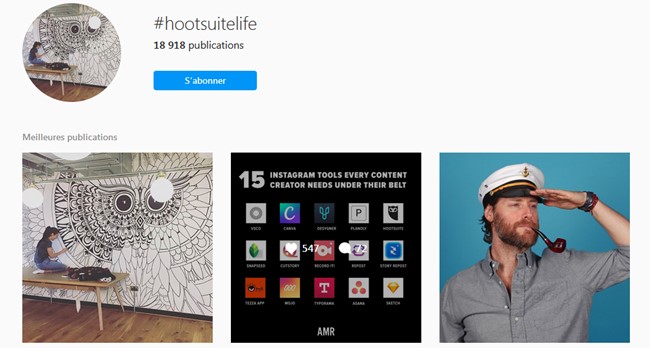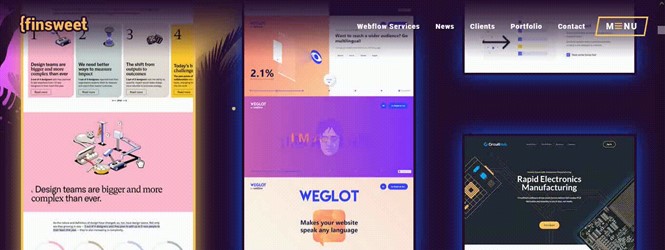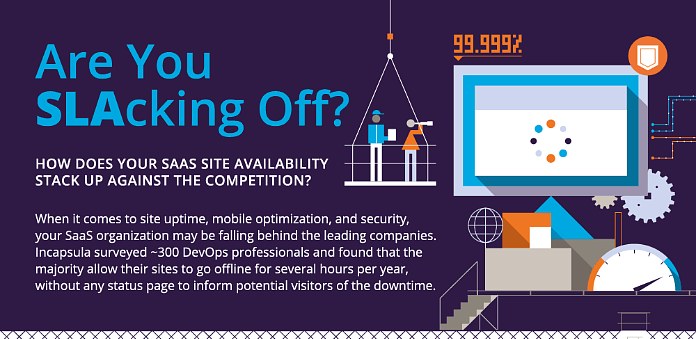If you want to connect with your prospects, leads, and customers online, you need to create content that engages them across multiple touch points. For that reason, B2B companies should use visual content marketing alongside their other marketing methods.
Visual content marketing can improve engagement with your audience and share information about your products and services, both of which help marketers accomplish their goals.
Why Is Visual Content Engaging and Memorable?
Humans are naturally visual creatures, which is reflected in our viewing habits. When you look at the amount of time spent on social media platforms, you'll notice that the visual platforms are winning the battle for our attention. YouTube is the most popular, followed by Facebook and Snapchat.

B2B marketers use visuals to build an audience, engage with that audience, and convey important information. Also, visual content marketing enhances understanding and retention of readily consumable information. That makes it an essential part of your B2B content marketing strategy.
Here are eight visual content marketing ideas to enhance your campaigns.
1. Graphs and Charts
Data reporting and analysis are crucial to B2B marketing. Graphs and charts are the most effective visual tools for clarifying and providing a suitable canvas for analysis.
We use graphs and charts in business to inform and educate our audience and make a point. They help simplify an argument, and they can transmit complex information quickly.
The handy thing about graphs and charts is that it's easy to reuse the same graphics for various marketing channels. You can easily share your graphics across multiple channels.
And if the information you are sharing has value, your audience will likely use those graphics, too.
Consider the following image by Baymard concerning cart abandonment rates as an example.

The image is frequently cited by other sites when discussing cart abandonment. In fact, 160 sites have used the graphic, according to an image search on Google.

All that exposure aids in brand recognition. I'm sure many people are unfamiliar with what Baymard does but recognize the company's name. The increased brand recognition through use of the graphic undoubtedly improves lead generation, as well.
2. Illustrations
B2B marketers can use illustrations to communicate a variety of messages—for example, explaining complex business models, or helping your audience quickly understand new concepts.
IBM uses a "customer stories" illustration to demonstrate how its technology has helped the progress of various projects.

The illustrations are visually engaging and relevant.
Illustrations can also form an important part of a company's brand identity. By creating illustrations that share common characteristics, you create marketing material that your audience will immediately recognize. In such an instance, simply seeing an illustration might make people stop what they are doing and pay attention to the content. That can result in clickthroughs to your site, a sale, or another positive outcome.
3. Action Photos
Real-life photographs can captivate an audience, especially when you have a physical product. As a result, companies are increasingly paying photographers to develop photos to match specific campaigns.
Let's use IBM again as an example. When IBM was promoting Quantum System One in Japan, it uploaded real-life action photographs of the installation process at its Kawasaki Business Incubation Center. That collaboration encouraged laboratories and universities in Japan to use IBM's system.

Avoid stock images, because they can appear in your competition's materials. But authentic images can help your prospects and leads imagine how the product will fit into their workflow and improve their lives.
Using photographs that correctly depict your target market's demographics and conditions can help you reach your goals.
4. User-Generated Content
User-generated content (UGC) can help you engage with your audience and connect with your company's brand ambassadors. It is a great way to collect visual content that reveals how your services help companies and what the real-life applications of your products are.
The type of content you collect can vary: videos, social media posts, even logos on walls.
Check out this artist creating the Hootsuite logo on a wall.

The best way to spur UGC creation is to provide motivation. For example, hosting a competition with prizes is obvious motivation for users' creating and sharing a piece of content.
Other motives include allowing users to promote their work through your business channels—for example, resharing content through your Instagram account.
You can gather all your UGC in one place using social media hashtags.
Hootsuite, for instance, created the #houtsuitlife hashtag. Its UGC campaign seeks to drive app downloads and enhance its brand image. It also aims to encourage users to show how much they appreciate the company.

Provide space for creative freedom, and reward people who share content.
5. Micro-Infographics Created From Text
Micro-infographics are quickly becoming a marketer's best friend, particularly on social media sites and mobile. They allow you to communicate with your target audience in a more concise manner than a lengthy text block.
B2B marketers can use micro-infographics to engage their audience and deliver snippets of information that answer a specific issue.
Check out this example from HubSpot that depicts how meetings are structured. As you can see from the screenshot, the image generated a lot of comments on social media.

Make your micro-infographics interesting, eye-catching, and easily consumed so your viewers will appreciate them. You can also inject an element of humor into your content—assuming that fits with your brand voice, of course.
6. Scroll-Triggered Animation
Have you ever been fascinated by the movements, animations, and element transitions that appear on every scroll of a website? That functionality is called scroll-triggered animation.
It's a great way to keep new audiences and potential customers engaged long enough for you to communicate your message. You can also use it to highlight the action you want them to take.
For example, Finsweet is offers Web design and development services. On its main page visuals start moving when your mouse cursor is over them. The scroll-triggered animation also has text and image effects, element transitions, and more.

People love textual content that adjusts to their scrolling speed, images that zoom in or shrink as they enter or depart the viewport, and visuals that follow the movements of the mouse pointer.
Scroll-triggered animations are particularly effective for highlighting calls to action, special offers, infographics, storytelling material, and more. They also speed up page load time, which is crucial for SEO.
7. Interactive Infographics
Interactive infographics can bring life to a concept. They allow the viewer to click and drag the infographic's components. Adding movement, pop-ups, scrolling effects, and other elements will help make your company unique and memorable.
Check out the following example. Movement in the Imperva infographic catches viewers' attention and keeps them engaged for a longer time.
Furthermore, interactive infographics enable using several features on the same piece of information at the same time. That gives the visitor complete control over the interpretation of the material.
8. Pins on Pinterest
Pinterest is a natural marketing medium for B2B firms. It's a visual search engine with a large user base where you can create boards and share content relevant to your target audience's interests.
You can use pins in many ways. For example, you can construct a new educational platform for your avatars, then provide your target audience with something to explore: how-to instructions for using your product, professional advice for getting started with your services, or industry data that demonstrates what to expect from your service.
Hootsuite, for instance, created a case study board that allows viewers to get an idea, in just one look of how much its clients love the brand.

Pinterest a great way to enhance Hootsuite's image. The social proof also increases the brand's chances of getting more paying clients.
* * *
Visual content marketing is vital for B2B firms. As described in this article, there are plenty of opportunities to engage with your audience through visual marketing. Hopefully you've gained a bit of inspiration for your marketing campaigns.
More Resources on Visual Content Marketing
How to Build Trust With Data Visualization: Caroline Jerome on Marketing Smarts [Podcast]
One Tip to Improve On-Page SEO: Use More Mini-Infographics (A Guide)
Why a Picture Really Is Worth a Thousand Words According to Neuroscience





